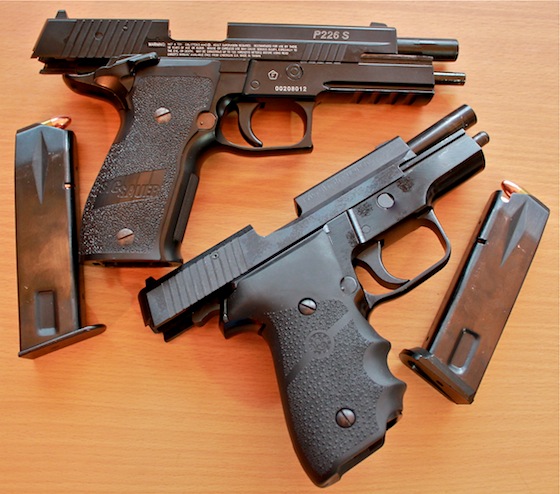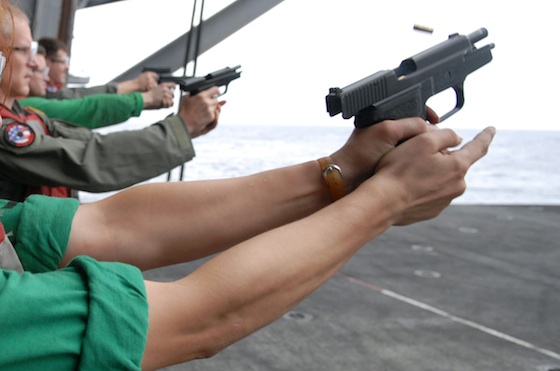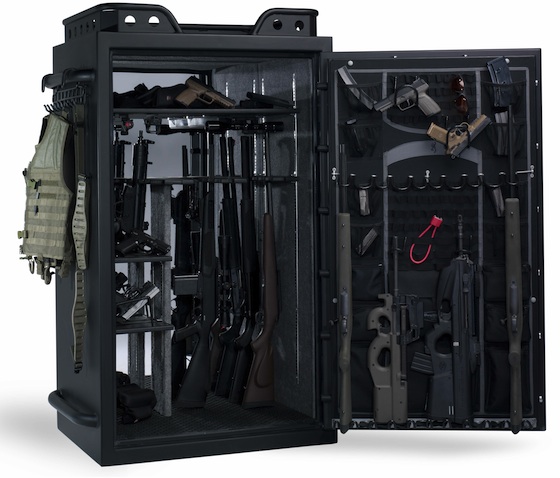Is an Air Gun, Blank Gun, Airsoft gun a Firearm in Canada?
Can you tell which one is "Real" and which one is an "Air Gun"?
There seems to be a lot of confusion about what is a Firearm, especially in Canada because we have some confusing laws in this area.
First off, I am not an expert on this and this article is just my own personal understanding of how this works so don't quote me on it!
What is the definition of a Firearm? This is what Wiki says:
"A firearm is a device which projects either single or multiple projectiles at high velocity through a controlled explosion. The firing occurs by the gases produced through rapid, confined burning of a propellant. This process of rapid burning is technically known as deflagration. In older firearms, this propellant was typically black powder or cordite, but modern firearms use smokeless powder or other propellants. Most modern firearms (with the notable exception of smoothbore firearms) have rifled barrels to impart spin to the projectile for improved flight stability."
So clearly this does not include air guns because no "burning explosion" is involved.
Here is what Canada says a Firearm is for the purposes of the Canada Firearms act:
"A barrelled weapon from which any shot, bullet or other projectile can be discharged and that is capable of causing serious bodily injury or death to a person, and includes: Any frame or receiver of such a barrelled weapon, as well as, anything that can be adapted for use as a firearm."
Notice that Canada does not limit Firearms to only include weapons that use explosions to propel a projectile. So this means that Air guns are considered Firearms in Canada! Or does it?
In Canada we have exemptions to what is considered a regular "Controlled Firearm" that change there classification to a "Uncontrolled Firearm" and here they are:
- Antique firearms.
- Devices designed exclusively for signalling, for notifying of distress, for firing blank cartridges or for firing stud cartridges, explosive-driven rivets or other industrial projectiles;
- Shooting devices designed exclusively for slaughtering domestic animals, tranquilizing animals, or discharging projectiles with lines attached to them;
- Air guns and other barreled weapons designed to have: A muzzle velocity of 152.4 meters per second or less and a muzzle energy of 5.7 joules or less.
So this means Airguns that shoot under 500fps and have a muzzle energy of less than 5.7 joules or 4.2 foot pounds are considered "Uncontrolled Firearms" in Canada! This is good news because if you're 18 years old, you can walk into any sporting goods store and buy an air gun. You also do not have to abide by all the strict rules and regulations a "Controlled Firearm" must.
Keep in mind that if you use an exempted "Uncontrolled Firearm" in a criminal or negligent manner then it will be considered just like a "Controlled Firearm" and your A$$ is going to jail!
What about Blank Guns? It does mention in the exemptions that devices exclusively for firing blank cartridges and/or for signaling "Flare" are also exempt.
But hold on a moment there is another law governing what Canadian law considers "Replicas":
"Replica firearms are prohibited
To be prohibited as a replica firearm, a device must closely resemble an existing make and model of firearm. If it looks like an antique firearm, as defined by the Criminal Code and Criminal Code Regulations, it is not prohibited.
The Canadian Firearms Program receives many enquiries from people wondering whether an imitation firearm would be considered a replica if it resembles a real firearm in many ways, but it is made of clear or brightly coloured plastic, or is much smaller in size.
Many of these devices need to be assessed case by case. As a general rule, however, those made out of clear plastic and those that are a lot smaller than the real firearm are not prohibited replicas. Those that are brightly coloured might be prohibited, depending on other features."
So are Blank Guns that look like real guns replicas and therefore prohibited in Canada? And does that make Replica Air Guns Prohibited too? It's all so confusing...
This is how I understand what our Canadian Gun laws to be:
Air Guns for the sake of the "Canadian Firearms Act" are considered Firearms in the first place and so they are real guns and can look like real guns, the exemption to this rule is based on the fact that they shoot under 500fps and have a muzzle energy of 4.2 foot pounds or less, not on what they look like.
Blank Guns in Canada walk an even finer line. Basically, the ones that are being allowed into the Canada at this moment are classified as "Signal" or "Flare Guns" and they all come with flare adaptors. Secondly, they are not exact replicas of real guns in existence. If you have a blank gun that is the spitting image of a real gun and/or it does not have a flare adaptor and is capable of shooting flares then you have yourself a prohibited weapon which beleive it or not is governed even tighter than an actual restricted Firearm in Canada!
The last thing I want to mention even though I don't really do the Airsoft stuff personally is: "what about Airsoft guns?"
Many Airsoft Guns start out by not being classified as a Firearm because they are not capable of causing serious bodily injury or death to a person. So if they look like a real gun or are a replica of a real gun then they are considered Prohibited. To get around this law, most Airsoft guns in Canada have clear plastic sections and also come with red tipped barrels. There are however, some Airsoft guns that shoot a .20 gram BB over 366fps upgrading them so-to-speak into the same classification as a regular (Pellet/BB) Air Gun because the increased velocity makes them potentially capable of causing serious bodily injury or death to a person. These "high fps" Airsoft guns do not require clear plasitc parts or red tipped barrels. Here is a link to some more updated information specifically on the Airsoft subject.
So now I have cleared this all up for you, or, you're just more confused then when you stated reading this article! Either way these are our Canadian Firearms laws as they pertain to Air Guns, Blank Guns and Airsoft Guns!








